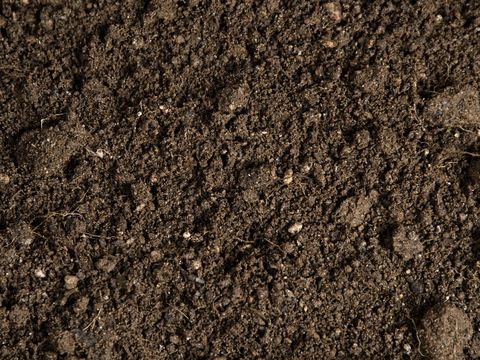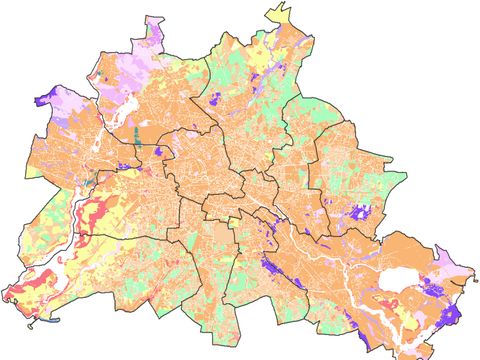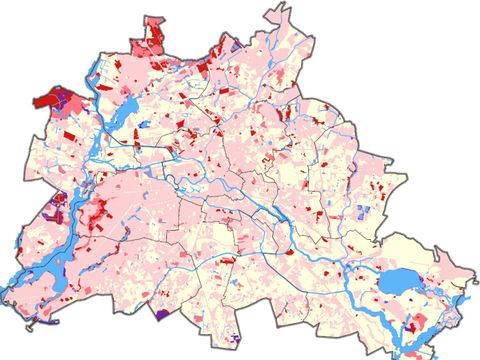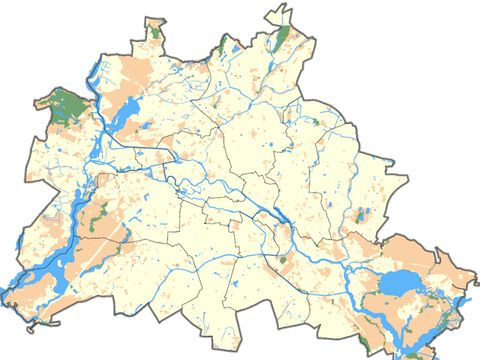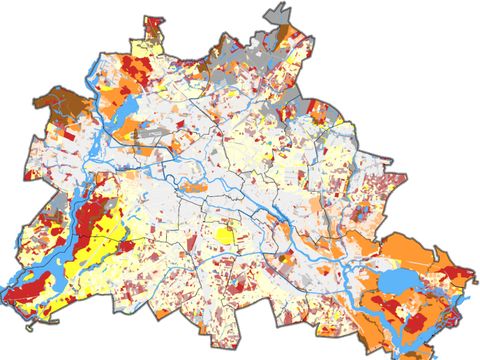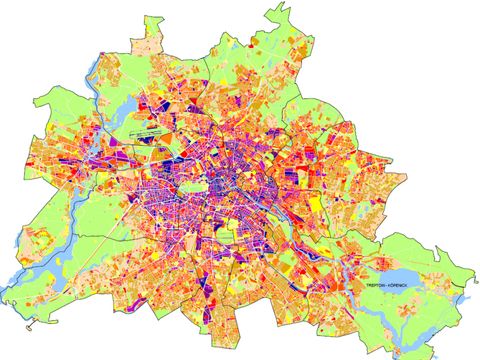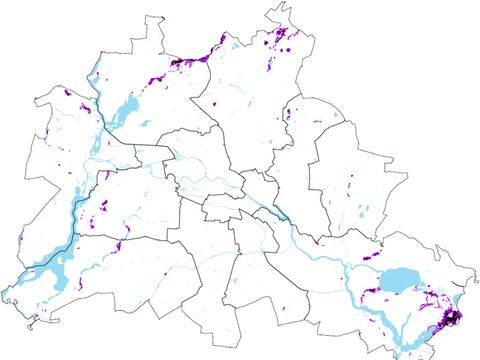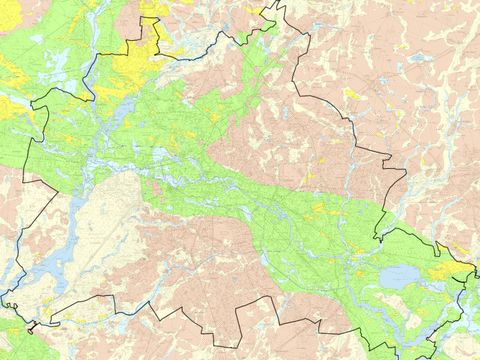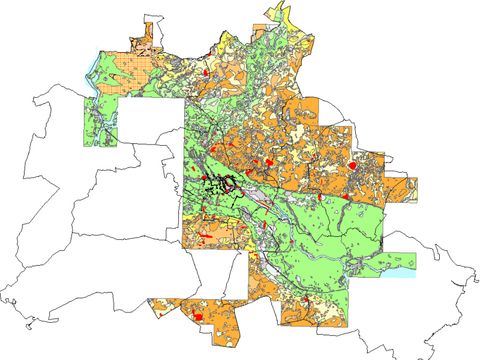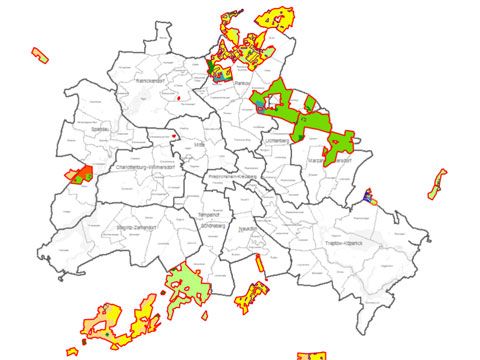
Image: Umweltatlas Berlin
Soil Associations
What types of soil do we encounter in Berlin? And what parent materials form the basis for the soils on which we walk? Take a look at our “Soil Associations” topic. Learn more about the distribution and frequency of different soil associations here. More information

